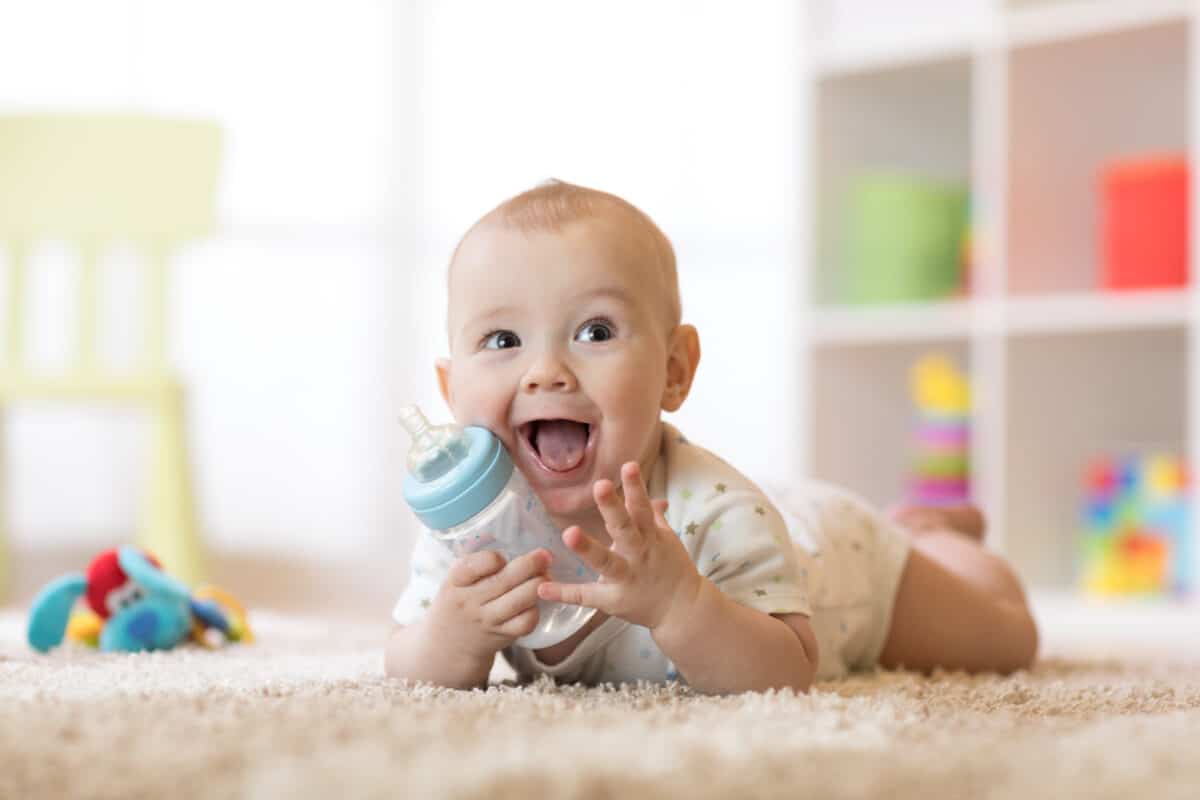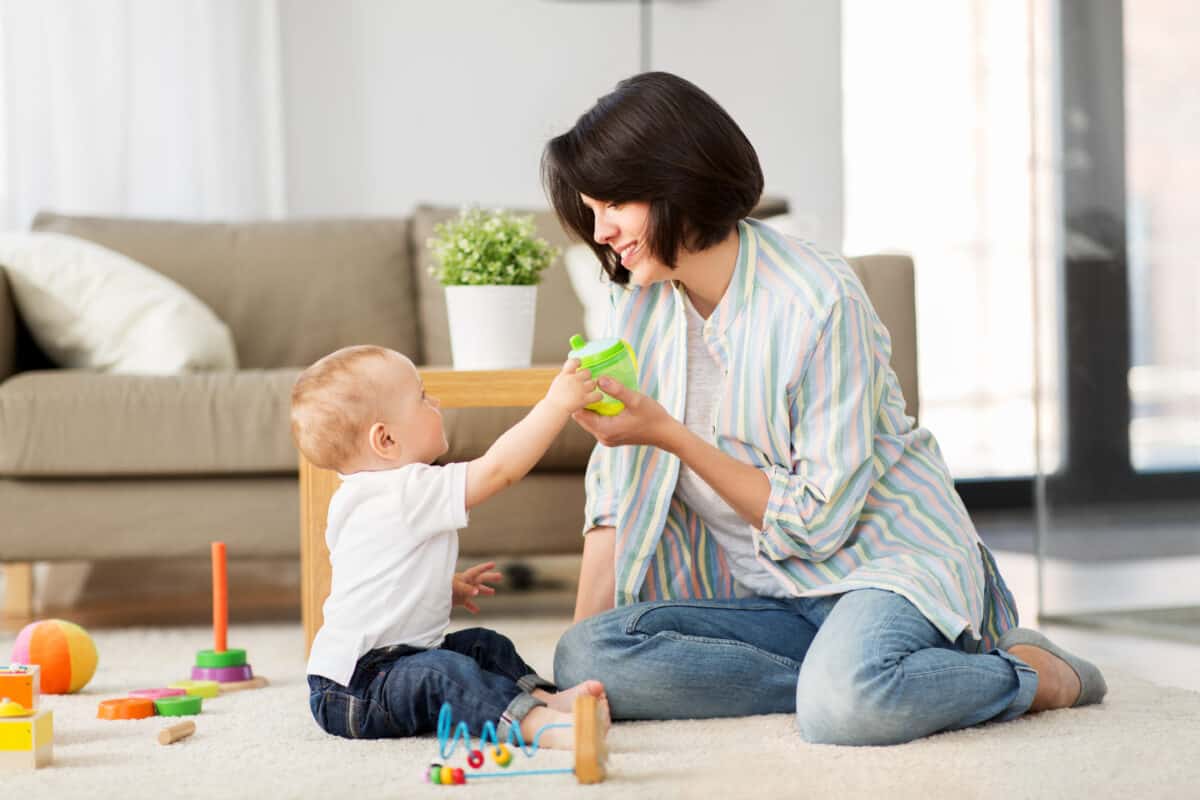Weaning your baby from the bottle can be a tough job. Babies like bottles just about as much as they like the breast. They are easy to use, and they provide a predictable measure of comfort. They have likely been an important part of the daily routine since your baby was born, from waking up in the morning to going to sleep at night. But eventually, parents must help their little ones move on from the bottle. It is important for your baby’s health and well-being. Here are eight steps to help you wean your baby off the bottle gradually.
Consider All Health Concerns
The very first thing you should do when beginning any big transition is consider any health conditions your baby has. Weaning a healthy baby with no medical conditions is a fairly straightforward task. Yes, it requires time and patience, but probably not a trip to the pediatrician. However, if your baby has health concerns, such as premature birth, failure to thrive, a congenital heart defect, feeding abnormalities, or anything else that might result in complications, please consult the doctor. You can probably get answers to any questions you have about transitioning from the bottle at your well child visit.
Pick a Good Time to Wean Your Baby
Assuming your baby is healthy and ready to go, the most important step in weaning them from the bottle is picking the right time to start. Remember, this process will take time and patience. Your baby must be ready, and you must have the time available to help them.
How do you know if your baby is ready to begin moving on from the bottle? Ask yourself these questions. Are they sitting up on their own? Can they eat at least some solid foods independently? Do they show interest in holding or using a cup?

This baby can hold a bottle on his own and may be close to being able to start trying out a cup at feeding times.
©Oksana Kuzmina/Shutterstock.com
Usually sometime between 6 and 9 months of age, babies reach the milestones above. At that time, you might want to begin introducing your child to a cup with just a little bit of water, breastmilk, or formula. You’re only getting your baby used to the idea of a cup at this point, not attempting to take away the bottle. Avoid using sugary drinks in the cup to entice your baby to drink from it.
Once you see that your baby is handling cups easily and able to take a few sips, it is time to start thinking about when to begin the weaning process. You will want to complete this process before your baby turns 12 months old if you can.
Take a Look at Your Schedule
If possible, look for a break in your schedule when you will not have too much else going on all at once. You might want to avoid weaning your baby during a hectic holiday season, or in the middle of a huge project at work. Try not to begin weaning when you and your baby will be traveling or otherwise facing a big disruption of their routine.
Don’t Be Afraid to Start Again Later
If you have started the process, and run into obstacles such as a serious illness, an unavoidable trip, or anything else that makes weaning nearly impossible, just press pause. Try again in a few weeks. It’s okay to falter and give it another go.
Get Your Supplies Ready

Finding the right cup for your baby can be a matter of trial and error.
©Ground Picture/Shutterstock.com
If you don’t already have a cup or two for your baby, you’re going to need to get those ready. This can be a process of trial and error, just like buying your baby’s first bottles. Babies can usually manage sippy cups on their own. You can choose from a variety of lids and spouts, and some even have straws. With patience and training babies can also use open cups with no lids at all. Look for designs that are made for babies and toddlers, easy to hold and difficult to tip over.
Wean Your Baby by Substituting Gradually
Don’t make the mistake of taking away your baby’s bottle abruptly. Take this journey slowly and gradually. Start by substituting just one bottle each day, or even part of a bottle, with a cup containing formula, breastmilk or water. Concentrate on making the switch during just that one feeding each day. Slowly increase the amount that is offered in the cup instead of the bottle during that particular feeding for the first week or so.
Offer Cups Consistently While Weaning Your Baby
Your baby may reject the cup at this feeding, and that’s okay. As long as your baby is a healthy weight and has no medical conditions that would preclude you from weaning from the bottle, keep offering cups at the chosen feeding. Your baby will still be getting plenty of breastmilk or formula at their other feedings, even if they completely refuse to drink from the cup at first. Make sure to offer other healthy foods, and remember that as your child approaches 12 months of age, they will normally be getting more of their nutrition from solid foods.
Substitute the Cup at Additional Feedings
As you wean your baby, begin to offer breastmilk, formula or water at additional times through the day, one feeding at a time. Don’t offer cow’s milk until your baby is at least 12 months old. Give your baby a few days or more to adjust to each new replacement before adding another feeding to the cup routine. Put all baby bottles out of sight during these feedings, so your baby doesn’t see them. Save the bedtime bottle for last, as it will likely be the most difficult bottle from which to wean your baby.
Make Mealtimes Fun
Remember the advice to choose your timing carefully? Your baby is more likely to adjust happily to using cups and letting go of the bottle if you are present and involved during their meal times. Bring them to the table, and join them in having a meal or a snack. Demonstrate and assist in using the cup, and praise your baby for doing a good job. Sing songs, play games, have a conversation.
Reassure Yourself About Weaning Your Baby
This is an amazing time in your baby’s life! They are learning so much and changing so quickly. Try to embrace weaning your baby from the bottle as a journey you are taking together. It may have its stops and starts, but it will happen.
Your Baby Will Get Enough to Drink
It can be a scary thing to go from feeding your little one an exclusively liquid diet to one that includes solid foods. Transitioning gradually from the bottle to cups will help ensure that your baby still gets plenty of fluids as they adjust to the new routine.
Tantrums Happen
Babies don’t have a lot of ways to express their anger and frustration. Tantrums are a normal part of development, and you can expect your baby to have more than a few as their routines change. Don’t let a little baby rage keep you from weaning.
Weaning is the Healthiest Choice
Although letting your baby stay on the bottle as long as they want might seem like the easier thing to do, it’s not the healthiest option for them. Research shows that using bottles past 12 months increases the risk of obesity. Prolonged bottle use also puts babies at risk of tooth decay and ear infections.
You Will Sleep Again
One of the greatest fears of parents who are beginning to wean their babies from the bottle is that the process will disrupt the whole family’s sleep. This can be especially daunting to folks whose babies were not great sleepers during the early weeks or months of life. There is nothing like finally having everyone in the house sleeping peacefully through the night only to face a huge disruption once again.
Be assured, if you save the bedtime bottle for last, the transition will probably take less time than you think. Consider allowing your baby to continue using a pacifier for comfort, and spend extra time creating a soothing bedtime routine that does not center around the bottle. A nice warm bath, a quiet story time and lots of snuggles can go a long way toward transitioning away from the need for a bottle.
Up Next
- When Should Your Baby Wear Shoes for Newborns?
- How To Unblock Baby’s Nose Naturally — In 5 Steps
- How To Make Baby Food At Home With Natural Ingredients
The image featured at the top of this post is ©anek.soowannaphoom/Shutterstock.com
